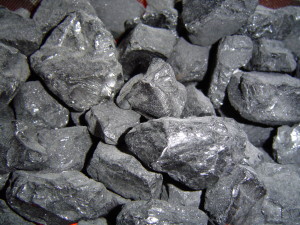By: Kristina Wilson
On Thursday, January 19, 2017, the Fourth Circuit issued a published opinion in the criminal case United States v. Blankenship. The Fourth Circuit affirmed the defendant’s conviction for federal mine safety laws and regulations and held that the District Court committed no reversible error. The defendant raises four arguments on appeal.
Facts and Procedural History
The defendant owns and operates Upper Big Branch Coal Mine (“The Mine”). The Mine had received repeated citations for violations of the Mine Safety & Health Act of 1977 (the “Mine Safety Act”) and its accompanying regulations. 30 U.S.C. § 801 et seq. Many of these violations related to improper ventilation and the accumulation of combustible materials. The defendant was made aware of these violations on a daily basis through routine reports. In 2015, a jury convicted the defendant of conspiring to violate federal mine safety laws. On appeal, the defendant raised the following four contentions: i) the District Court erroneously concluded that the indictment sufficiently alleged a violation of Section 820(d); ii) the District Court improperly denied the defendant the opportunity for cross examination; iii) the District Court incorrectly instructed the jury regarding the 30 U.S.C. § 820(d); and (iv) the District Court incorrectly instructed the jury as to the state’s burden of proof.
The District Court Did Not Err in Refusing to Dismiss the Indictment
Under the Fifth and Sixth Amendments, an indictment must contain the elements of the offense charged, fairly inform a defendant of the charge, and enable the defendant to plead double jeopardy as a defense in a future prosecution for the same offense. United States v. Perry, 757 F.3d 166, 171 (4th Cir. 2014). An indictment that sets forth the statutory language itself is usually sufficient under this standard, provided that the language sets forth all the elements of the offense without uncertainty or ambiguity. Id. The indictment in question used the language of the 30 U.S.C. § 820(d) , which provides that an operator of a mine may not willfully violate a mandatory mine health or safety standard.
The defendant argued that the indictment was insufficient because it did not cite any specific mine safety laws or regulations that he allegedly conspired to violate. The Fourth Circuit noted that although the indictment itself did not set out the specific citations, the indictment included as an attachment a thirty-page document that detailed the specific laws and regulations violated and how the defendant violated them. Thus, the Fourth Circuit dismissed the defendant’s first contention.
The District Court Did Not Deny the Defendant the Opportunity for Cross Examination
When a new matter is revealed on redirect examination, a defendant is entitled to cross examination concerning the new matter. United States v. Fleschner, 98 F.3d 155, 158 (4th Cir. 1996). A new matter is testimony that raises a subject outside the scope of direct examination or testimony that is materially diffferent from the testimony presented on direct examination. United States v. Jones, 982 F.2d 380, 384 (9th Cir. 1992).
The defendant argued that a witness’s testimony regarding a statement allegedly the defendant allegedly made, as well as made testimony regarding safety violations constituted new matters. However, even if the testimony did constitute new matters, the Fourth Circuit asserted that the District Court could only have committed harmless error. The content in the questioned testimony, according to the fourth Circuit, was sufficiently introduced and examined at various points throughout the trial. Moreover, the defendant cross examined the witness for five full days at trial, which the Fourth Circuit felt was sufficient opportunity. Therefore, the District Court’s holding that the testimony did not constitute a new matter could only have been harmless error.
The District Court Did Not Improperly Instruct the Jury
The defendant argued that the District Court improperly instructed the jury on the meaning of “willfully” in 30 U.S.C. § 820(d). The District Court gave the following four instructions regarding the definition of willfully under the statute: i) knowingly taking actions that cause a mine health or safety standard to be violated, ii) knowingly failing to take an action required to meet mandatory mine health or safety standards and knowingly allowing that omission to continue, iii)knowingly failing to take actions that are necessary to comply with mandatory mine health and safety standards, or iv) or knowingly, purposefully, and voluntarily taking action or failing to take action with reckless disregard for whether that action or failure to act will cause a mandatory safety or health standard violation.
The defendant argued that the fourth definition allowed the jury to impermissibly equate reckless disregard and willfulness. However, the Fourth Circuit noted that both “reckless disregard” and “plain indifference” can generally constitute criminal willfulness. RSM, Inc. v. Herbert, 466 F.3d 316, 320 (4th Cir. 2006). The Fourth Circuit then had to determine whether reckless disregard could constitute criminal willfulness specifically under the statute in question. To answer this question, the Fourth Circuit first examined precedent that held that a defendant violated the Mine Safety Act when intentionally or with reckless disregard disobeyed mandatory safety standards. United States v. Jones, 735 F.2d 785, 789 (4th Cir. 1984). The Fourth Circuit also examined the Mine Safety Act’s legislative intent and history and held that Congress enacted the Mine Safety Act to punish habitual offenders against a backdrop of courts construing criminal willfulness to include reckless disregard when defendants continually violate a federal law despite repeated citations. Thus, the District Court did not incorrectly define “willfulness” under the statute.
The District Court’s Use of the Two-Inference Instruction Was Not Reversible Error
The defendant finally argued that the District Court’s use of the two-inference instruction reduced the government’s burden of proof to a preponderance of the evidence. The two-inference instruction tells the jury that if the evidence permits reasonable conclusions of both guilt and innocence, the jury should favor innocence. Although the Fourth Circuit had not yet had the opportunity to evaluate the two-inference instruction, it noted that other circuits generally disapproved of the practice as failing to instruct the jury on how to find if the evidence of guilt is stronger than that of innocence, but not beyond a reasonable doubt. United States v. Khan, 821 F.2d 90, 92 (2d Cir. 1987). The Fourth Circuit agreed that this inference was problematic and prohibited its future use.
However, the Fourth Circuit did not agree that the use of the two-inference instruction was reversible error. It concluded that throughout the trial, the government’s burden was properly stated as beyond a reasonable doubt. Further, the District Court also repeatedly instructed the jury on the presumption of innocence. Therefore, the use of the two-inference instruction did not constitute reversible error.
Conclusion
The Fourth Circuit affirmed the District Court’s conviction of the defendant for health and safety violations under the Mine Safety Act.



